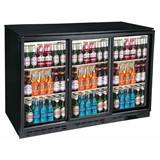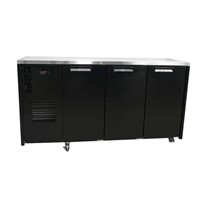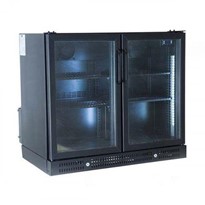Ventilation
Always ensure that you meet with the manufacturers guidelines on ventilation. The correct amount of space between your bar fridge and the surrounding walls will allow your unit to remove heat more effectively. Adequate space on rear-venting units will allow the compressor in your bar fridge to run less frequently. Front-venting units do not require this additional space; however the front grill needs to be kept clean from things like pet hair and excessive dust. Use a vacuum cleaner with a soft brush attachment to clean your grill on a monthly basis. Ensure that the internal vents in your bar fridge that allow cold air to circulate are not obstructed with stock.
Capacity
Keep your bar fridge full. Once the items have been chilled down, your fridge will use less power to maintain a constant temperature. The reason for this is due to the amount of times the door of your refrigerator is opened and closed. Each time you open the door, warmer air from the outside rushes into your fridge following a process known scientifically as osmosis. The warm air rushes in whilst cold air rushes out. The longer you leave the door open the more work your bar fridge will have to do to return the unit to its set temperature. The cooled beverages will remain at temperature when your bar fridge door is opened for a few seconds – whilst the air around them will not. Less space in your fridge for warm air to enter equals a better performing unit.
Stock Rotation
Make it a habit of rotating your stock from back to front when you add new supplies. This minimises the chance that your beverages do not exceed their use-by dates, and secondly this allows the warmer beverages to cool faster. Warm drinks that are placed closer to the sensors that govern and regulate the thermostat (and the refrigerant piping in the rear panels) will always cool faster, thus consuming less power.
External Heat Sources
Keep your unit away from external heat sources wherever possible. Have you ever noticed that glass door fridges in shops and cafes are always pointed away from direct sunlight? This prevents radiant energy from entering the fridge through the glass. The same rules apply in your kitchen or alfresco area. Other heat sources such as ovens and fireplaces need to be kept at an adequate distance to minimise running costs.










-160x160-state_article-rel-cat.png)





















